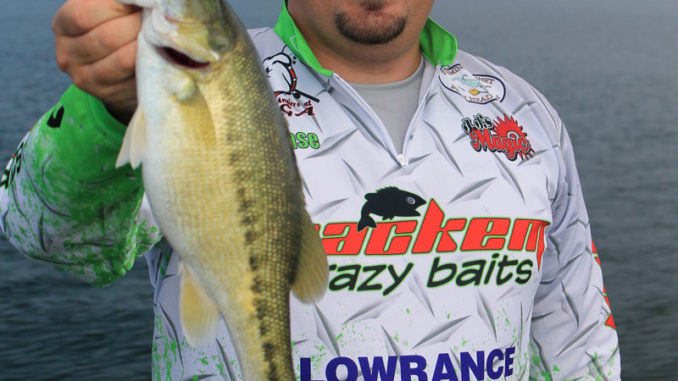
Look for ledges and fish finesse baits vertically in prespawn and post-spawn; fan-cast them at height of spawn.
While thousands of spectators will marvel at the professional bass fishermen on Lake Hartwell in next year’s Bassmasters Classic, most will be bass-fishing enthusiasts who’d love to catch more fish on the sprawling Savannah River reservoir.
Chase Simmemon of Fair Play is no different, but he’s already well along the way to being a Lake Hartwell expert. He fished on the University of Georgia’s fishing team, winning the 2011 Southeast Regional championship, and he’s no stranger when it comes to catching limits of bass from the lake’s deep waters.
Simmemon uses many techniques, but his preferred method for putting big spotted bass in the livewell is the drop-shot rig. Spotted bass are a major species at Hartwell and other Savannah River system lakes, but many anglers catch them almost accidentally while fishing for largemouth bass. Simmemon isn’t one of those fishermen.
“I love catching bass, but spots are much stronger and fight longer than the largemouth,” said Simmemon, who said April poses many challenges to fishermen targeting spots. “You will have fish in prespawn, spawn and post-spawn. If the water temperature is below 60 degrees, I will know most of the fish are in prespawn mode.”
Five degrees warmer and the fish will be actively spawning.
“Water temperature dictates everything when it comes to spots during this time of year,” he said. “Water temperature dictates which stage the fish are in, and with Hartwell being so large, you can have fish in each stage depending on where you are on the lake.”
Knowing which stage the fish are in will determine how Simmemon needs to fish to put a limit in the boat. When targeting fish that are still in prespawn, he looks for ledges in anywhere from 15 to 30 feet of water, depending on the temperature. One or two degrees’ difference in water temperature can dictate whether the fish are in 15 or 30 feet of water. By locating ledges that are extremely steep, he knows fish use these areas to move up and down in the water column without expending much energy to move horizontally.
“Spots like to spawn in deep water. I’m looking for ledges in 15 to 18 feet to find where the spots will most likely spawn,” Simmemon said, noting that spotted bass spawn in much-deeper water than their largemouth cousins. “While many (fishermen) are beating the shallows for largemouth, I can come out here in deeper water and fill my limit with spots.”
While spotted bass don’t get as big as largemouths, they are strong and stout fish.
“When catching a limit for a tournament, catching 20 pounds a day is a good day for a 5-fish limit. While I can’t do it all the time, I feel confident I can get closer with five spots than I can with five largemouth,” he said.
When fishing ledges, Simmemon will zig-zag across the drop, using his electronics to locate fish. Once located, he uses a drop-shot rig to put his baits directly in front of the fish.
“When fish are this deep, nothing beats the drop-shot for producing fish, especially big fish.” said Simmemon, whose drop-shot tackle consists of a 7-foot, medium-action spinning rod and reel loaded with 10-pound braid, tied to eight feet of 30-pound fluorocarbon leader and a 3/8-ounce cylindrical weight. (add details). A 1/0 re-barb hook is tied in at a 90-degree angle above the weight, and a finesse worm is rigged Texas-style to keep from hanging up in brush piles.
“As a general rule, the warmer the water, the longer distance between the weight and hook,” he said. “But a good rule of thumb is to set the hook between eight and 14 inches above the weight.”
If he’s confident that fish are on a ledge but is not getting any bites, he’ll shorten the distance between the weight and the hook, basically fishing the bait closer to the bottom.
There is a lot of debate among anglers on what kind of bait to use when fishing with a drop-shot rig. Simmemon believes in keeping it simple, using what are commonly called finesse worms like Wackem’s Big Sissy worm in bruised tomato.
“I helped develop this color specifically for deep-water, drop-shot fishing.” Simmemon said. “While others will definitely catch fish, this is my go-to bait for big fish in April.”
If the water temperature is above 60 degrees, spotted bass will begin to move into the spawning phase.
“I like to look for the hard bottoms that the spots prefer for spawning,” he said, focusing on areas with flat, harder bottoms and casting his drop-shot rig instead of fishing it vertically beside his boat.
“The drop shot is just a reversed Carolina rig.” Simmemon said, explaining that he can cover more ground casting it than fishing it vertically, important because fish are usually scattered across a hardbottom area.
While spotted bass can be found all over Hartwell’s 56,000 acres, Simmemon has had a lot more action from the convergence of the Tugaloo and Seneca rivers south. Andersonville Island is a great landmark for anglers looking to finding suitable areas for locating spots.
“Fishing between the convergence of the rivers and the dam will produce the most action if you are targeting spots.” Simmemon said.
When the spawn is completed, fish will start moving out to the main lake.
“Spots really like brush piles in the deeper water. After the spawn, find these brush piles and you will find spots,” he said. “When you find the brush piles in deeper water, look for fish in and around them.”
Once Simmemon finds a good location, he fishes the drop shot vertically.
“Drop the weight to the bottom; tighten the line just so the bait is suspended off the bottom, with the weight keeping contact with the bottom at all times,” he said. “Then gently shake the rod tip — finesse is essential.”
If you are going to err, Simmemon said, err on the side of subtleness.
“The boat rocking, and your shaking is going to give the bait plenty of action; don’t overdo it.”
DESTINATION INFORMATION
HOW TO GET THERE — Lake Hartwell is a U.S. Army Corps of Engineers Lake on the Savannah River west of Clemson and Anderson. Its Tugaloo River arm and a portion of the main lake serves as part of the border between South Carolina and Georgia. I-85 crosses the lake several times and provides great access via US 76, SC 187, SC 11 and US 29. For a complete list of public boat ramps, visit www.dnr.sc.gov/mlands/boatramp/?p_type=1229779.
TACKLE/TECHNIQUES — Fish a drop-shot rig on medium-action spinning tackle around ledges that drop from 15 to around 30 feet of water. Before and after the spawn, fish vertically. When you suspect that spotted bass are spawning, fan-cast the rig in water around 15 to 18 feet deep. A finesse-style piece of soft-plastic is the preferred bait.
GUIDES/FISHING INFO — Brad Fowler, Fowler Fishing Guide Service, Piedmont, 864-934-5813, www.fowlerfishing.com; Lake Hartwell Fishing & Marine, Anderson, 864-287-9782; Grady’s Great Outdoors, Anderson, 864-226-5283; Port-Tronics, Greensville, 864-299-1432. See also Guides and Charters in Classifieds.
ACCOMMODATIONS — Charlotte Waters, S.C. Mountain Lakes Recreation, 877-685-2537, www.scmountainlakes.com.
MAPS — Kingfisher Maps, Clemson, 800-326-0257, www.kfmaps.com; Fishing Hot Spots, 800-ALL-MAPS, www.fishinghotspots.com.

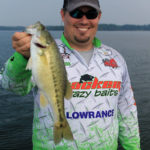
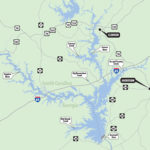
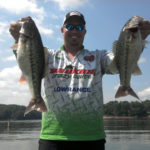
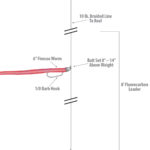

Be the first to comment